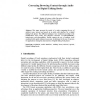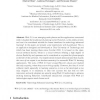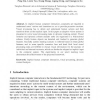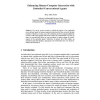HCI
2007
15 years 1 months ago
2007
Developing a robot system that can interact directly with a human instructor in a natural way requires not only highly-skilled sensorimotor coordination and action planning on the ...
HCI
2007
15 years 1 months ago
2007
This paper reports on the results from a series of psychoacoustic experiments in the field of the auditory representation of texts via synthetic speech which comprise similar acous...
HCI
2007
15 years 1 months ago
2007
Accessibility implementation efforts are generally focused towards some typical user impairments and a few interaction devices for a particular user scenario. Whereas there are num...
HCI
2007
15 years 1 months ago
2007
The increasing variety of user device technologies has raised the necessity for ubiquitous content provision, which is characterized by “intelligent” content delivery to end us...
104
click to vote
HCI
2007
15 years 1 months ago
2007
This paper presents the results of a study comparing the use of auditory icons, earcons and speech in an audio only interface for a digital talking book player. The different techn...
93
Voted
HCI
2007
15 years 1 months ago
2007
Web 2.0 is an emerging catch phrase and the applications associated with it shocked the traditional eLearning world. However, is this really all new and can it be considered suitab...
111
click to vote
HCI
2007
15 years 1 months ago
2007
In implicit human computer interaction, computers are required to understand users’ actions and intentions so as to provide proactive services. Visual processing has to detect an...
103
click to vote
HCI
2007
15 years 1 months ago
2007
We survey recent research in which the impact of an embodied conversational agent on human-computer interaction has been assessed through a human evaluation. In some cases, the eva...
90
Voted
HCI
2007
15 years 1 months ago
2007
The use of mobile technologies for self services, and the inclusion of elderly and cognitively disabled users in the self-service society can be improved by the application of appr...
HCI
2007
15 years 1 months ago
2007
Numerous methods have been developed to help designers to understand and consider the needs and desires of end-users, but many have had limited uptake in design practice. In order ...






